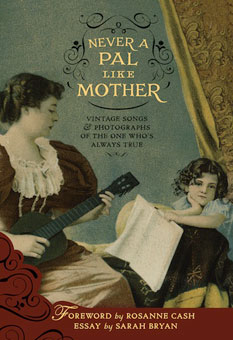
From NPR WABE http://news.wabe.org/post/remembering-atlanta-minister-known-hurricane
An Atlanta minister and musician known as “The Hurricane” has died.
Rev. Johnny L . Jones preached to small congregations in the latter part of his life, but his charismatic style and prodigious musical talents earned him wider recognition.
When people talk about Rev. Jones, often, they talk about the music. See this tribute made in 2009 by Dust to Digital’s Lance Ledbetter:
Fannie Wair, who listened to Rev. Jones’ music and preaching at Second Mount Olive Baptist Church in Atlanta for nearly six decades, explains it: “He don’t only sing. He plays the guitar, he plays the organ, and can’t nobody play no piano like him.”
Wair first met Jones in 1956, when she hired the gospel group he was singing with at the time to perform at the church she then attended. A little while later, she heard him preaching on a local radio program.
For her, that was it.
She went to see him at Second Mount Olive Baptist Church, and never looked back. “You go hear him preach or sing one time, you want to go back again,” she says.
The Birth of “The Hurricane” and Musical Fame
Through the years, Jones had gospel programs on WAOK and WYZE in Atlanta. According to Walter Russell, a deacon at Second Mount Olive, it was WAOK’s Esmond Patterson who gave Jones the nickname he’d carry throughout his career.
“He named him ‘The Mighty Hurricane.’ Because when he preached, a lot of times he’d go into a spin like a hurricane. The Mighty Hurricane, Johnny L Jones,” Patterson says. “[A] lot of times, he’d stop playing and just start singing old time hymns that most people never did use music by. But he could sing those also.”
Rev. Jones recorded his services, and in the 1960s, Jewel Records released some 45s of his work. In 2010, Dust-to-Digital Records released several remastered CDs of his music and preaching. In a review, The New York Times called the sound of one of those sets “electrifying from start to finish.”
Rural Beginnings…and a Piano Not Meant for Boogie-Woogie
Jones grew up in a farming family in Howell Crossroad, Alabama. He sang in the choir of his Baptist church, and when he was 17 or 18, more than anything else, he wanted a piano. But, as his wife, Dorothy Jones tells it, his family was poor. So his mother devised a plan, around the family’s cotton harvest. “She said, ‘John? We’re gonna all pick this cotton. And if we have any extra money… we’re gonna buy you a piano.’”
The plan worked. They got the piano, and Jones taught himself to play by ear. But one day, his wife Dorothy Jones says, he was messing around, and played a few bars of boogie-woogie music.
His mother heard it. She was not amused. The family had not bought their son a piano on which to play boogie-woogie.
Dorothy Jones laughingly tells the story: “And she came in there with a stick, and hit him across his hands and said, ‘Don’t you ever try to play no blues!’ So from that day on, he started playing gospel. He was a pianist and he sang.”
He sang with several gospel groups before moving to Georgia in the mid-1950s where he became a minister at Second Mount Olive Baptist, drawing crowds with his captivating style.
The Fire that Burned the Sanctuary, but Not the Church
One Sunday in 1973 while Jones was preaching, a fire broke out. No one was hurt, but the West End church was completely destroyed, and many people stopped coming to the new, smaller spaces where they’d hold church. But Jones kept preaching.
“He said ‘The fire burned the building, but not the church,’” says Deacon Walter Russell, describing how, in the 42 years that followed, “he would preach and sing and play the organ, just like he did when the church was standing, and we all enjoyed and had a good time.”
Those who knew him best will remember that voice and climactic preaching. But they say they’ll also remember his unflaggingly upbeat personality, his devotion to his faith and five children, as well as, a commitment to his congregation that endured, even when times got hard.
On Nov. 8, Jones preached from the first sermon he ever wrote at Second Mount Olive. That night, he passed away. The family believes the cause to be a brain aneurysm. He was 79 years old.








